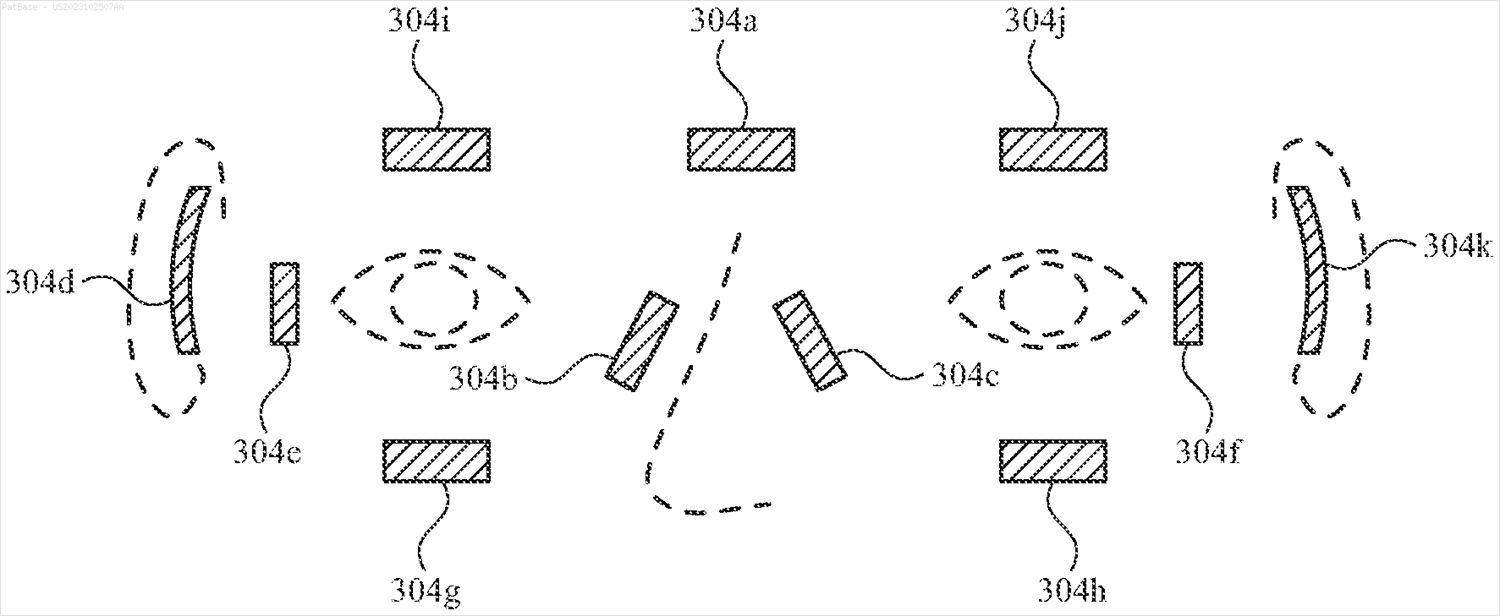Apple Vision Pro: The Patents Behind The Technology
After years of rumours and speculation, Apple has finally unveiled its much anticipated mixed-reality headset. Called the Apple Vision Pro, it supports both AR and VR applications and is being named the most advanced personal electronics device ever, with over 5,000 patents filed related to it.
What is The Apple Vision Pro?
The Apple Vision Pro is a new type of virtual reality headset that blends the digital and real world, allowing users to control everything using their eyes, hands and voice rather than holding physical controllers, introducing us to “spatial computing”. It uses micro-OLED technology to pack 23 million pixels into two displays.
The Apple Vision Pro utilises twelve cameras, five sensors, and six microphones and is powered by Apple’s M2 chip and also has a new R1 chip. Years of innovation and R&D have gone into developing this incredible breakthrough in technology, let’s have a look at some of the patents that made it happen.
The Apple Vision Pro – 5000 Patents in The Making
It has required over a staggering 5,000 patents to make the Apple Vision Pro a reality. Some of the most important patents that were used to develop the Vision Pro deal with tracking the user’s head and eye movements, as well as allowing users to interact with digital content using their hands or voice.

Image from patent number US20230102507 Eye detection methods and devices (source: PatBase).
One of the Apple Vision Pro’s patent applications, US 20230102507 filed in 2021, focusses on eye-tracking and gesture recognition technology. We now know that the device will be equipped with sophisticated sensors and algorithms to track eye movement and interpret hand gestures accurately. This functionality could allow users to interact with the digital content projected by the device using intuitive gestures or even eye movements, providing a natural and intuitive user experience.
Apple’s VR Patent That is Combating Motion Sickness
One of the Apple Vision Pro’s patents shows how Apple has made it safe to use Apple’s VR headset with motion sickness. Apple’s VR headset’s motion sickness reduction is happening at the processor level. Vision Pro’s R1 chip is responsible for processing data from the 12 cameras, 5 sensors, and 6 mics on the device. However, Apple has tuned it in a way that will reduce motion sickness and improve the overall immersion at the same time.
The Apple VR headset adjusts the image around and outside the user’s peripheral vision to make it more immersive, whereas normal AR/VR headsets have a black border around the edges to keep you focused on the content in front of you. The headset audio is also tuned to keep the user focused and reduce motion sickness, and the R1 chip makes this whole process personal for each user.
According to the Apple VR headset’s patent, the headset will track eye movements, head positioning, and hand gestures to personalise the experience, working on 6 degrees of freedom (DoF), tracking user movements and adjusting the cues in real time.
Why Does Apple’s VR Headset Use So Many Patents?
Utilising over 5000 patents in its design has many people wondering just why Apple’s new VR headset has so many patents. There are a few key reasons why the Apple Vision Pro patent count is so high:
Protecting New Functions and Processes
When thinking about the incredible number of patents the Apple Vision Pro has, it is important to think about the long-term effects within the technology industry. Even though it is just one device to a user, the Vision Pro is made up of thousands of small innovations in technology, such as the motion sickness reduction technology we mentioned earlier.
Each one of these components, and the processes that go into making them, could give competitors and other tech companies many opportunities for developing not just rival products, but other devices that utilise the same technology or process. By patenting the processes and the components that make up their product, Apple can protect their innovation and competitive advantage.
Delaying Competition
By patenting their individual processes and technology, Apple can reduce the amount of rival products from competing with them, as any attempts to replicate Apple’s technology would risk patent infringement. Any competing companies who want to develop their own similar technology and patents would have to go through a lengthy patent process and build a case that their invention is different enough from Apple’s.
IP Licensing Opportunities
By developing and patenting thousands of new processes and components, Apple now has the opportunity to licence certain intellectual property rights to others, which would present potential massive financial gain. This could be done by licensing to companies in different sectors who would benefit from access to the advancements in technology, and wouldn’t directly compete with Apple in the VR headset space.
Using Apple’s Vision Pro’s Patents to Predict Innovations
Apple’s patenting activity over the years gave a glimpse of what features and functionalities might be included. The headset is a testament to Apple’s commitment to innovation, and it represents a major step forward in the development of spatial computing. As the space continues to develop, we can expect to see even more innovative and exciting applications for the Apple Vision Pro.
Gain Patent Competitive Advantages with Minesoft
Apple’s Vision Pro’s patents are the perfect example of how a company’s patenting activity can give an idea of what they might be developing next. Therefore, it is paramount for all innovative organisations to utilise a patent database, which can help you gain competitive insights and understand what is happening in a technology space.
Minesoft’s PatBase is the leading global patent database, enabling innovators worldwide to make informed strategic decisions. Contact us today to request a demo, to see for yourself how the leading global patent database can improve your patent strategies.

